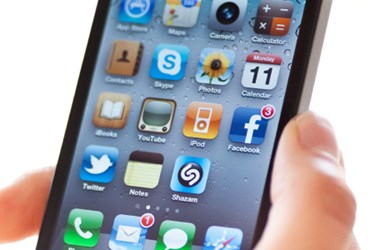Flu-Predicting App Created

By Christine Kern, contributing writer

The smartphone app is the latest in predictive analytics brought to the patient.
Researchers from Duke University and UNC-Chapel Hill have developed a smartphone app that can predict the spread of influenza from one person to the next over time, according to Upstart Business Journal. The idea behind the app is that healthcare providers could use its data to warn those at risk before they contract the flu and encourage them to stay home to forestall the spread of the germs.
Statistician Katherine Heller says this development is “game changing,” stating, “It’s really important in the field of medicine in general to capture information on a shorter time scale than information that has been captured in the past. Your mobile phone, that’s a mechanism for you to enter information about your health on a second by second basis.”
And the best part is that you don’t need to wait for your doctor, Heller explained, “Because we can collect data on that small time scale and because we can collect data of a new, individualized kind, we can better make predictions.” The program uses an app developed by collaborators.
The project was supported by both the U.S. National Science Foundation and the U.S. Centers for Disease Control and Prevention. The research was based on a study of 100 students living in college dormitories who voluntarily signed up for the platform. They used the app, Epi, to monitor where students went and individuals with whom they had contact, recording symptoms weekly, and then predicting the spread of the disease.
“This study showed that it is possible to harness the power of collecting real-time data with smartphone apps to measure interactions and behaviors more accurately,” co-author Dr. Allison Aiello said. “We believe this serves as a window into the future of epidemiological data collection. This technology has allowed us to better assess the context in which social and behavior practices influence health.
“With this experience, however, we now see that it is possible to scale up beyond 100 individuals so that we can collect these types of data in large-scale populations to better understand transmission and risk of diseases that are very much driven by social interactions.”
The app is also unique in that, unlike other social media forecasting tools, the Epi app can provide a personalized daily forecast for each patient. “We didn’t have this kind of personalized health data until a few years ago,” Heller said. “But now, smartphones and wearable health and fitness devices allow us to collect information like a person’s heart rate, blood pressure, social interactions and activity levels with much more regularity and more accurately than was possible before. You can keep a continuous logbook.”
“We want to leverage that data to predict what people’s individual risk factors are, and give them advice to help them reduce their chances of getting sick,” Heller said.
The challenge comes in getting individuals to give up their data, an obstacle that many healthcare apps and predictive analysis programs find difficult to overcome.
